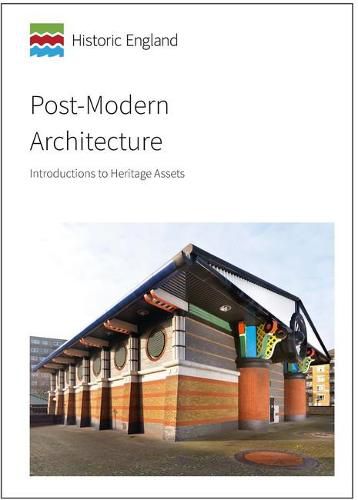Readings Newsletter
Become a Readings Member to make your shopping experience even easier.
Sign in or sign up for free!
You’re not far away from qualifying for FREE standard shipping within Australia
You’ve qualified for FREE standard shipping within Australia
The cart is loading…






Post-Modernism is a movement and a style prevalent in architecture between about 1975 and 1990. It is characterised by its plurality, engagement with urban context and setting, reference to older architectural traditions and communication through metaphor and symbolism.
While influenced by developments in the United States and Europe, Post-Modernism in Britain has distinctive characteristics of its own, including an emphasis on urban context and the use of brick and other traditional building materials.
Post-Modernism was applied to many building types and sectors, particularly commercial architecture, cultural and civic buildings and small housing developments.
This document sets out the history and characteristics of post-modern architecture, showing how it was applied to different sectors and building types. It supplements Historic England’s Listing Selection Guides which set out the criteria for considering buildings of different types for designation.
$9.00 standard shipping within Australia
FREE standard shipping within Australia for orders over $100.00
Express & International shipping calculated at checkout
Post-Modernism is a movement and a style prevalent in architecture between about 1975 and 1990. It is characterised by its plurality, engagement with urban context and setting, reference to older architectural traditions and communication through metaphor and symbolism.
While influenced by developments in the United States and Europe, Post-Modernism in Britain has distinctive characteristics of its own, including an emphasis on urban context and the use of brick and other traditional building materials.
Post-Modernism was applied to many building types and sectors, particularly commercial architecture, cultural and civic buildings and small housing developments.
This document sets out the history and characteristics of post-modern architecture, showing how it was applied to different sectors and building types. It supplements Historic England’s Listing Selection Guides which set out the criteria for considering buildings of different types for designation.